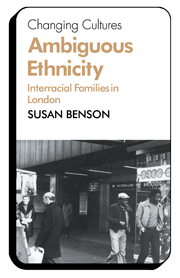True Londoners Are ExtinctPosted in Articles, Arts, Census/Demographics, History, Media Archive, United Kingdom on 2012-03-01 18:24Z by Steven |
The New York Times
2012-03-01
Craig Taylor
 Photo by Mark Neville. Children come to the Somerford Grove Adventure Playground in Tottenham, shown here, after school or on weekends to learn life skills like cooking. “There’s a real sense of adulthood to what the children are doing there,” Neville said. |
Later this year, thousands of Olympians will march into London under flapping flags, and the global TV audience will be treated to a romanticized version of the city, with helicopter shots of Big Ben competing for time against footage of Buckingham Palace guards staring stone-faced into the distance and double-decker buses bouncing unsteadily through too-narrow streets. By the end of the ceremonies, you’ll have seen the city’s bridges so many times that you’ll wish they had all fallen down years ago.
The overall impression these images are meant to give off is that London, for all its recent convulsions, is a city that remains preserved in its past, obsessed with its royals (the queen will celebrate her diamond jubilee in June) and populated by the type of cheeky folks mythologized in those postwar BBC social documentaries and kept alive by the likes of Guy Ritchie’s tired gangster clichés. Not Londoners. Lahndannahs.
But London in 2012, like most other global cities, is in significant flux, much less beholden to sepia-tinged notions of what it used to be and much more a product of its new arrivals. Over the last decade, the foreign-born population reached 2.6 million, just about a third of the city. In addition to longstanding Irish, Indian, Jamaican and Bangladeshi communities, there are now many new immigrants from Nigeria, Slovenia, Ghana, Vietnam and Somalia. I’ve seen Russians fly in on their private jets, and Eastern Europeans breach the city limits in cars filled to the roof with suitcases and potted plants…

